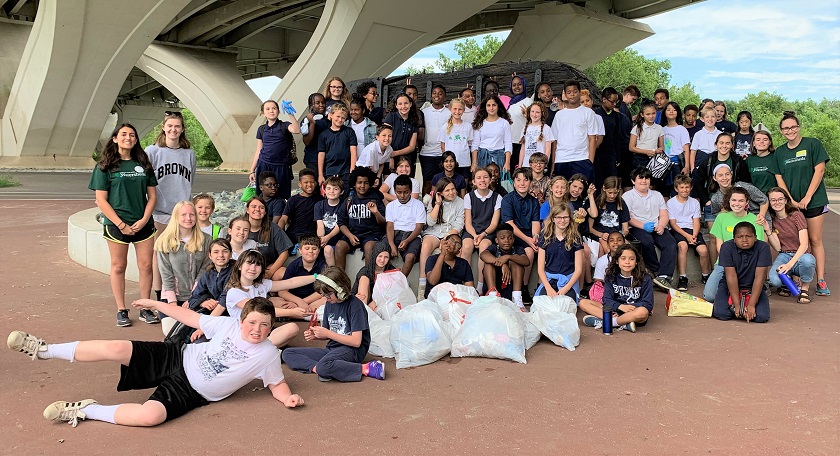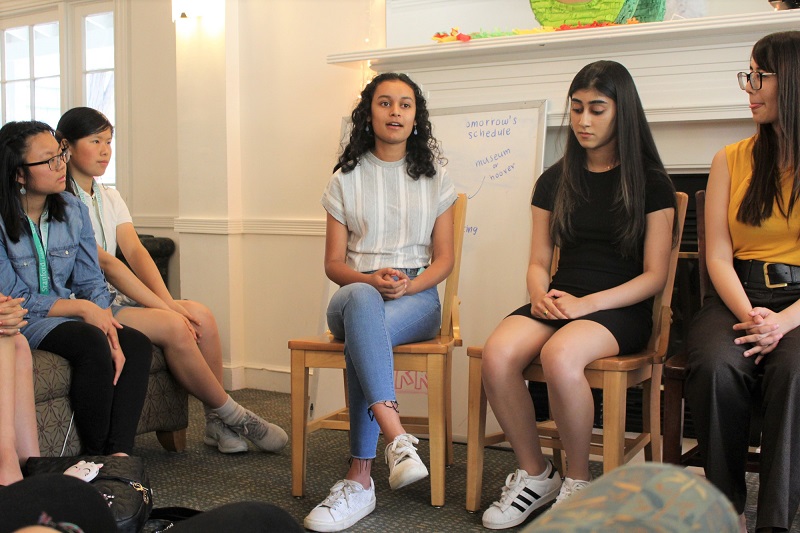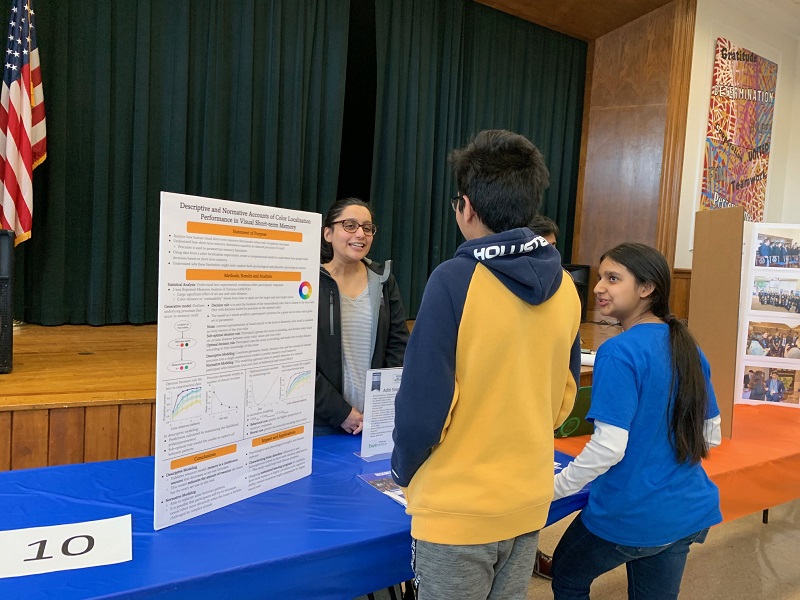For Society alumni, science and community go hand-in-hand

Regeneron Science Talent Search (STS) finalists are the scientific leaders of tomorrow. Alumni have made extraordinary contributions to science and hold more than 100 of the world’s most coveted science and math honors, including the Nobel Prize and the National Medal of Science. They are role models in their communities, inspire those around them to pursue their own scientific interests and perhaps eventually apply to the Regeneron STS.
In addition to the successful participation in finalist week this past March, the Regeneron STS 2019 finalists were required to complete three hours of STEM-related community service in order to claim their award funds. They contributed an incredible total of 930 hours of community service at over 25 organizations nationwide, impacting more than 3700 people of all ages. What’s even more impressive is that six finalists contributed hours related to their own mission-driven, non-profit organizations. Below, read about how some of these students gave back to their communities.
Ana Humphrey (BCM 2014-2015, ISEF 2017-2018), the 1st place winner of the Regeneron STS in 2019, spent time with Watershed Warriors, an environmental science organization she founded. “I organized and ran a field trip to a local wetland for about 60 fifth graders. During the field trip, my team and I taught the students about the environment, made connections to science concepts they had covered during the year and led them in service projects, including a trash pickup.” Ana also taught a lesson to fourth graders at a different public school in her community addressing how human actions can cause eutrophication and dead zones. As part of the activities, she challenged students to come up with solutions.
Ananya Karthik (BCM 2013-2014) gave presentations to 150 people, including students, education leaders and other professionals, about creAIte, an organization she cofounded in 2016. Through this work, Ananya aims to inspire middle- and high-school students from traditionally underrepresented groups in computer science and artificial intelligence through neural art in hands-on workshops. “Neural art refers to art generated using machine learning algorithms,” explains Ananya. “Over the past few months I have been working to raise awareness about creAIte, our approach to technology education and the need for diversity in CS and AI.” You can check out a TED talk Ananya gave earlier this year here.

Chirag Kumar contributed his time to the Newburgh Computer Project in New York, an initiative dedicated to refurbishing old university computers for a local vocational school, primarily comprised of 50 teenage students without access to them. “I wanted to have a real impact in the lives of people in my community. These are students who are brilliant—their computer science knowledge is outstanding and their drive and optimism is infectious. Many of the students were not only eager to learn, but also teach their younger siblings things like game programming! Unfortunately, they do not have the equipment needed to make their dreams come true. I felt compelled to act. I wanted to help unlock human potential and give them the resources they need to thrive.”
Brent Perlman (ISEF 2019) chose to volunteer at the Audubon Center in Greenwich, Connecticut because he wanted to give back to the place that originally sparked his passion for the life sciences. Besides giving nature tours to students, he also created a community science project to help track local butterfly populations. “I still vividly remember the first summer that I attended Audubon’s Summer Nature Camp when I was about five. Each day at the camp was a new adventure with bird hikes through meadows containing towering fields of flowers and journeys to the ‘Promised Land,’ a natural swimming hole teaming with fish and frogs,” he reflects. “Now, working side-by-side with the naturalists who once inspired my love of ecology and biology, I can help other children and community members see the beauty of the natural world.”

Aditi Singh discussed the Regeneron STS with approximately 1,000 attendees at the fifth annual Chappaqua STEMFest in Chappaqua, New York, where K-12 Chappaqua students and local STEM experts showcased their inventions and experiments. “Parents and young students were greatly interested and talked about their budding research projects. They were surprised to learn that the competition went beyond just evaluating the research, but also looked at the applicants themselves—as scientists—and their passions.”



